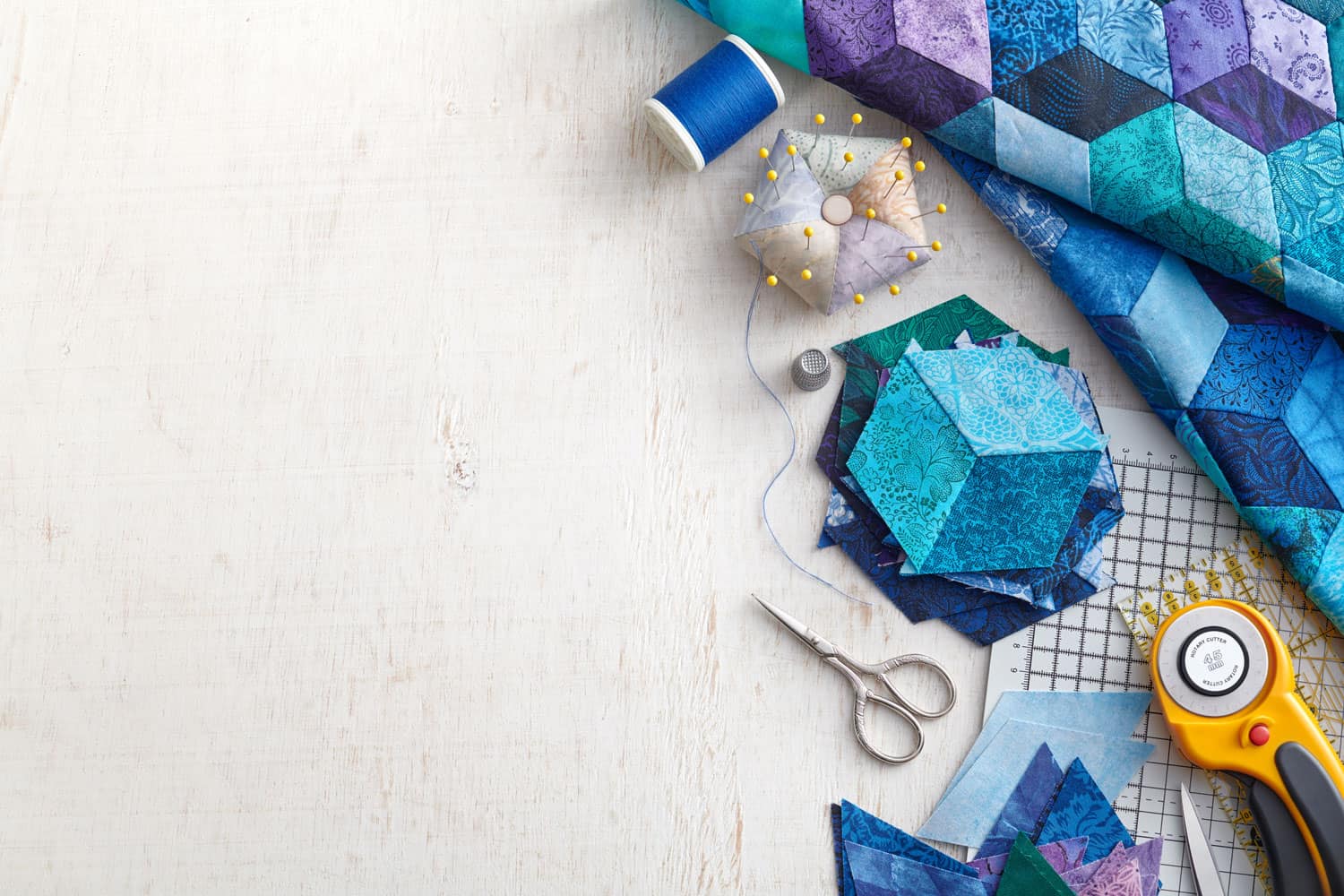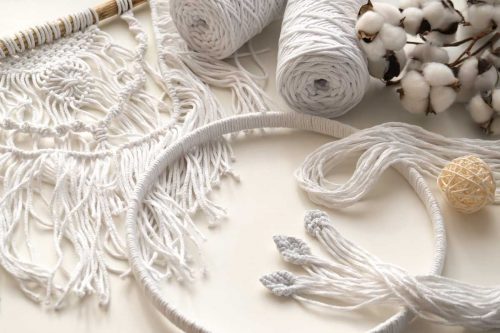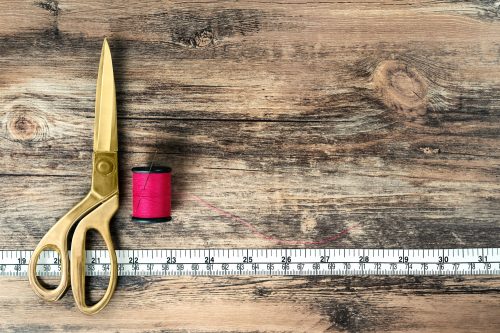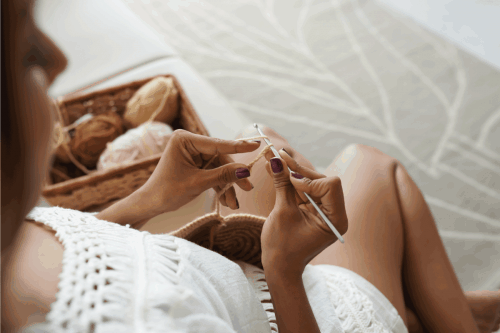Have you ever been to a friend's home or a cozy bed and breakfast and see a beautiful quilt on the couch? You might find yourself wondering how much it would cost to make yourself a quilt just as special. Look no further because we've done the research for you to find out!
Seasoned quilter or beginner, you'll be dishing out some cash to get yourself started. A full-sized quilt can cost anywhere between $250 and $500, while a baby blanket could cost less, ranging from $150 to $300. There are a few factors to take into consideration when looking at the cost:
- Size
- Equipment
- Material
- Time
Quilting is a very rewarding hobby or even career. Having a handmade quilt that is one-of-a-kind is personal and sentimental. We've broken down common questions of how to get started, what to do before getting started, and an explanation of the T-shirt quilt. So, please stay with us to get this hobby underway!

What Factors Into Quilting Costs
Size
There are a plethora of sizes to choose from, including baby, twin, full, queen, king, throw. Each one is going to need more fabric than the next and will take longer to assemble. For example, a twin-sized quilt is going to need about 200 squares of fabric, while a king-sized can stretch up to 375 squares if you're using 5x5 squares.
Equipment
Here comes the weight of the cost. Sharp cutting utensils and sewing machines are a necessity to help your workflow. Let's start with your work table. You'll save yourself a lot of back pain when you purchase a large table that can hold your entire project. To keep your table from getting cut up, buy a self-healing cutting mat. This mat will also come in handy since they're often gridded and include measurements.
Click here to view this self-healing mat on Amazon.
In terms of cutting, you'll need a rotary cutter and fabric scissors. Using everyday household scissors could end up giving you sloppy cuts and extremely frayed edges. A rotary cutter gives you more leverage while cutting and ensures a clean cut. Pair this with a dissolvable fabric marker and a non-slip quilters ruler to mark your lines. It's always better to measure twice and cut once!
Click here to view this rotary cutter on Amazon.
A sewing machine will save you a lot of time and hopefully reduce those pesky pinpricks! With the machine comes the correct needles and thread. Invest in a starch spray and iron to stiffen your fabric; this will make the handling much easier. If you don't want to use a machine, pick up a pair of quilting gloves and sturdy hand needles.
Click here to view this Singer sewing machine on Amazon.
There are certain quilters that don't like using pins for basting, a term for holding the layers together before sewing, due to thick needles leaving holes. An alternative to this method would be any sort of adhesive spray. Do a few practice strips with the spray before spraying the glue over the entirety of your quilt. Finally, you'll need quilt clips. these clips are specially made to hold the fabric taut while you bast and can hold the edge binding down until you reach that section.
Material
Maybe the most difficult part of the process and also the most fun! Choosing your materials. Quilts come in all sorts of colors and designs; there's really no wrong way to pattern a quilt since it is such a personal craft. For your quilt sandwich, you'll need three fabrics for the three layers: the quilt top, the batting, and the backing.
First, the quilt top. This is the eye-catching part of the quilt. If you're working in solid squares, how many colors do you want? How do you want to space them out? Most fabric stores sell stacks of mixed square fabrics, or you can check out their scrap section to really mix it up. Fabric is often sold by the yard and can vastly range in cost, starting at $4 and going all the way up to $20.
Click here to view these fabric squares on Amazon.
Second, the batting. An easier decision for the center of the quilt. The batting, also called wadding, is what gives the quilt its weight and warmth. You can use anything from wool, cotton, polyester, or a blend. Experimentation is the best way to learn. You can even try to make it weighted by adding glass or plastic beads.
Click here to view this wool batting on Amazon.
Third, the backing. The back of the quilt isn't the star of the show and therefore can be any color or print you'd like. A soft solid cotton sheet, an old bedsheet, and large pieces of clothing can be used. If you'd like your quilt to be uniform, you can always repeat the pattern on the backside as well. Just keep in mind you'll be spending double for the amount of fabric needed.
Click here to view this backing fabric on Amazon.
Time
When making a quilt for commission, factor in the labor. Your time is valuable, and you'll want to be paid for buying the materials and spending time on the construction. Depending on your skill level and the size of the quilt you're making, don't set too ambitious of a deadline, especially if you have other things on your plate.
It could take you a few weeks to even a year to finish a quilt. It's okay to get frustrated and walk away from it; stepping back lets you look at it with fresh eyes. Quilts have the ability to tell stories, mark special occasions and become family heirlooms.
How Many Hours Does It Take To Make A Quilt?
Quilting takes time. Once you have a feel for it, your personal process will affect the time to make the quilt. Some quilters enjoy sitting with their fabric to get to know it and be inspired by it. You'll spend a few hours drawing up your design and then laying it all out. Add in a handful more hours to take measurements and start cutting.
Using a sewing machine will speed things along. A baby quilt could take up to a week or less if you put more hours into it. On the other hand, a queen-sized quilt could take anywhere between two to three weeks. Hand sewing could double the time it takes, especially if you're doing a more intricate design.
Should You Wash Fabric Before Making A Quilt?
Washing fabric will prevent it from bleeding later on. If you wash your quilt at the very end and it has red and white, you might end up with pink squares! Prewashing the fabric will also help get any wrinkles out before starting. Take it out of the dryer right away, spray it with starch and iron for a sturdy fabric to work with.
What Is The Best Fabric For Quilt Backing?
From an in-depth look into the quilting community, 100% cotton has been noted as the best backing fabric. It is lightweight and breathable, even when filled with heavy batting. That means you'll stay cool in the summer and warm in the winter. You also don't have to spend a pretty penny on backing. Check out your local thrift store for donated bedsheets to use.
Is Quilting An Expensive Hobby?
To begin this hobby can be expensive, yes, but there is a great payoff once you start to advance. The most expensive part will be buying all the proper equipment and upkeeping them. All in all, the tools alone can cost between $250 and $350. However, if you decide to start taking commissions, you'll be able to make back a profit! Being thrifty with what types of fabric you use can also help cut down on your overall costs.

What Is The Easiest Quilt To Make For A Beginner?
A square design, also known as a grid pattern, is going to be the easiest beginner's quilt. Just as the name implies, your quilt will be a series of even squares in rows. This technique is the easiest since you won't have to stress over small details and can do a straight stitch throughout.
You'll be able to pick out any color fabrics you'd like for a more eccentric look or go with two favorite colors to make it your own. Stitching will become more complicated as you look into advanced patterns. A straight stitch can be done by hand or machine and has a pleasingly clean look to it.
How Do You Make A T-Shirt Quilt?
T-Shirts can hold sentimental value, and that makes them hard to part with. Instead of leaving them in a drawer to take up space, reenvision them into a shirt quilt! This type of quilt is made out of memories and love. You'll be able to breathe new life into your favorite t-shirt designs while making something you'll be able to use every day. A great plus of this quilt is that you already have the fabric!
- Pick out your t-shirts
- Decide how big you can make the quilt
- Make a drawn mock-up of the quilt
- Center and cut out logos, leaving room for seam allowance
- Iron on an interface liner to add stability
- Layout and stack the cut-outs in order
- Begin sewing column by column
- Iron down inside seams to one side
- Join the columns into rows
- Make quilt sandwich of top, batting, and backing
- Stitch or bast together
- Add a binding edge
- Enjoy!
Final thoughts
Quilting may seem like a daunting hobby to pick up, but truly it becomes easier with practice. You can make your own quilt, depending on size, for either $200 or $500. Time and start-up expenses will need to be factored into your journey, and that's okay! Quilting is a personal craft and is all about the journey. Don't forget to enjoy it!
Ready to learn more about quilting? Check out these articles:













